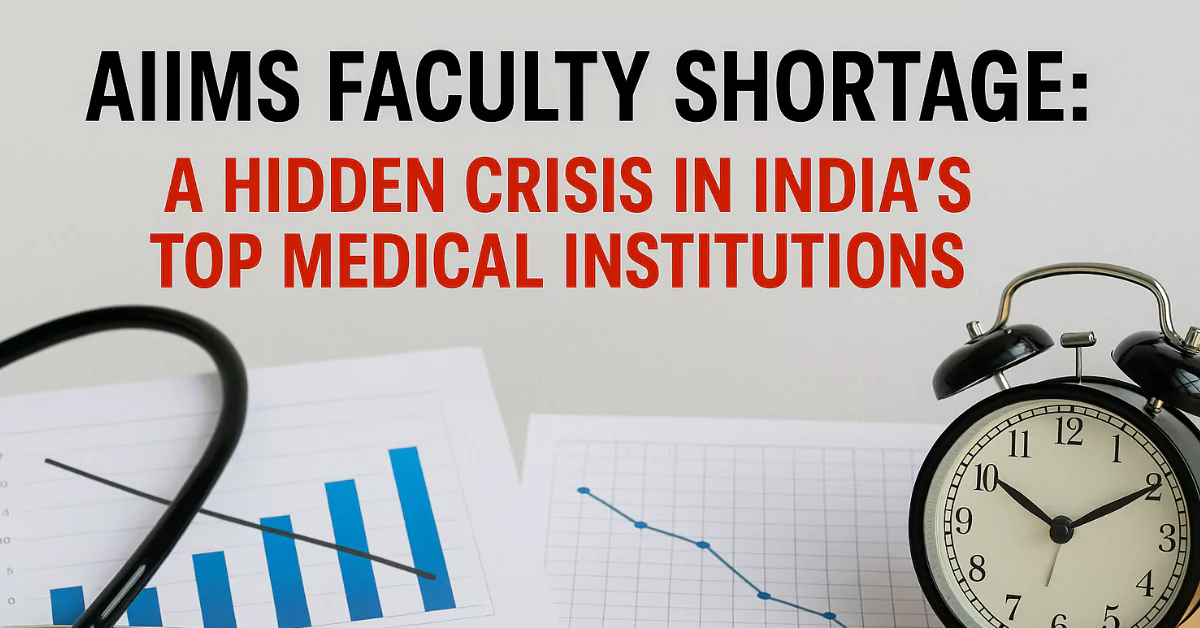AIIMS Faculty Shortage: India’s premier medical institutions, the All India Institutes of Medical Sciences (AIIMS), are facing a critical faculty shortage. A report presented in the Lok Sabha and based on the 134th report of the Department-related Parliamentary Standing Committee on Health and Family Welfare reveals an alarming shortage of faculty and non-faculty staff across various AIIMS branches.
AIIMS is the crown jewel of India’s public medical education and healthcare system. Founded in 1956, AIIMS New Delhi set the gold standard in training doctors, providing world-class patient care, and conducting groundbreaking medical research. To replicate this success, the government launched 23 new AIIMS under the Pradhan Mantri Swasthya Suraksha Yojana (PMSSY).
However, this rapid expansion has led to a critical issue, a severe faculty shortage, particularly in clinical and super-specialty departments. As per reports from the Ministry of Health and Family Welfare and multiple parliamentary committee reviews, many AIIMS struggle to recruit and retain qualified faculty members, leading to operational and academic challenges.
This shortage not only threatens the quality of medical education and research but also hampers patient care in a country striving to improve healthcare access and standards.
AIIMS Faculty Shortage
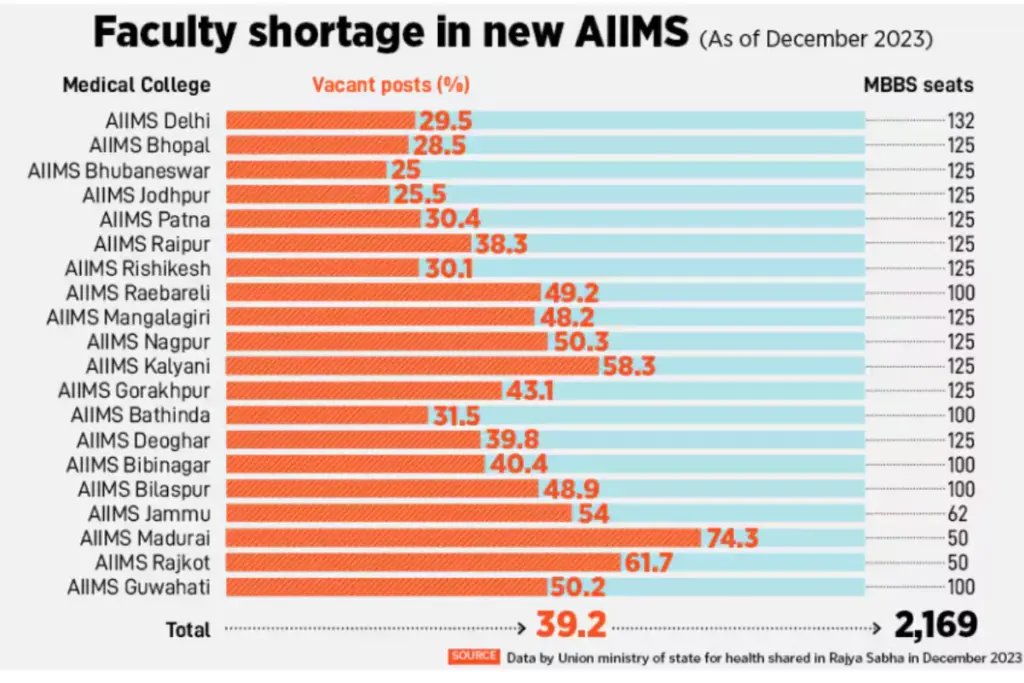
As of early 2023, AIIMS Delhi, the flagship institution, has 227 vacant faculty positions out of 1,131 sanctioned posts, a shortfall of 20%.
More alarming figures emerge from the newly established AIIMS:
| AIIMS | Faculty Sanctioned Posts | Faculty Filled | Faculty Vacant |
| Delhi | 1131 | 904 | 227 |
| Bhopal | 305 | 198 | 107 |
| Bhubaneswar | 305 | 231 | 74 |
| Jodhpur | 305 | 224 | 81 |
| Patna | 305 | 177 | 128 |
| Raipur | 305 | 184 | 121 |
| Rishikesh | 305 | 200 | 105 |
| Mangalagiri | 183 | 115 | 68 |
| Nagpur | 183 | 123 | 60 |
| Kalyani | 183 | 105 | 78 |
| Gorakhpur | 183 | 80 | 103 |
| Bathinda | 183 | 112 | 71 |
| Bilaspur | 183 | 91 | 92 |
| Guwahati | 183 | 79 | 104 |
| Deoghar | 183 | 96 | 87 |
| Bibinagar | 183 | 100 | 83 |
| Raebareli | 183 | 82 | 101 |
| Rajkot | 183 | 65 | 118 |
| Madurai | 183 | 8* | 183 |
| Vijaypur Jammu | 183 | 77 | 106 |
This massive shortfall is not limited to teaching staff. Non-faculty roles, essential for hospital operations and administration, also show significant vacancies. For example, AIIMS Guwahati has only 122 non-faculty staff filled out of 1,026 posts, leaving a gap of over 88%.
“AIIMS expansion without parallel faculty development is like building hospitals without doctors. Faculty shortage is the greatest bottleneck in making these AIIMS fully functional.” Former Director, AIIMS Delhi
Parliamentary Committee Report (2023-24):
“Despite physical infrastructure readiness in most AIIMS, operationalization remains incomplete due to a dearth of teaching and specialist manpower.”
AIIMS Faculty Shortage: Key Reasons
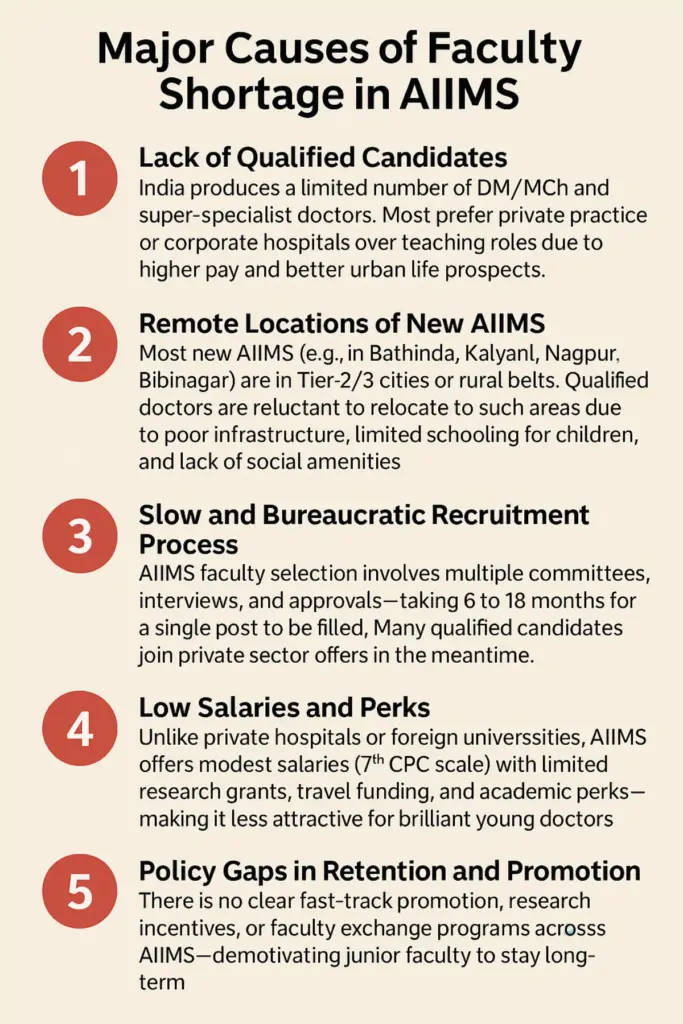
Impact of Faculty Shortage
On Medical Education:
- Lack of full-time professors affects curriculum delivery and the mentorship of MBBS and postgraduate students.
- Poor student-faculty ratio (ideally 1:2 for PG/SS students; actual ~1:5 in some AIIMS).
- Limited exposure in rare surgeries or speciality cases due to the absence of senior professors.
- Cancellation/postponement of practical sessions, clinics, and skill labs.
On Healthcare Services:
- Fewer specialists can compromise quality and timeliness of care, especially in high-load departments.
- Longer OPD and surgery waiting times due to fewer consultants.
- Inability to run 24×7 super-speciality emergency services (cardio, neuro, trauma) in some AIIMS.
- Reduced capacity for complex treatments compared to AIIMS Delhi.
On Research Output:
- Faculty play a vital role in medical research, innovation, and trials; these efforts stall when posts remain unfilled.
- Fewer clinical trials, publications, and patents from the newer AIIMS.
- Loss of international collaborations and funding opportunities.
- India’s global medical research standing has been affected.
Overburdened faculty face burnout, reducing productivity and increasing the risk of error.
Government Response to AIIMS Faculty Crisis
To tackle these gaps, the Ministry of Health and Family Welfare has initiated several measures.
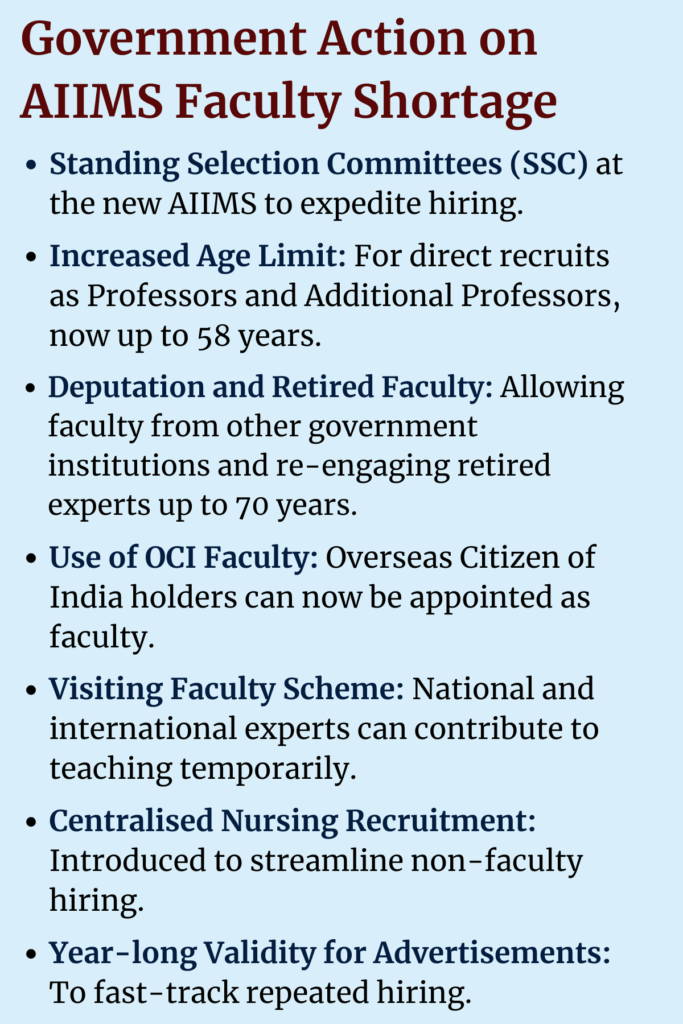
Structural Challenges
Despite interventions, the root of the problem appears deeper:
- Reluctance to Join New AIIMS: Due to geographic remoteness, lack of facilities, or career uncertainty.
- Slow Administrative Processes: Despite standing committees, delays persist in candidate screening and appointment.
- Lack of Incentives: Pay and career advancement may not be sufficient to attract top talent from abroad or top-tier Indian institutions.
AIIMS Faculty Shortage: Recommendations and Solutions
- Performance-linked Incentives for faculty in rural/remote AIIMS.
- Permanent Recruitment Cells at AIIMS with independent authority.
- Digital Integration for faster application, review, and onboarding.
- Collaborations with Top Institutes for joint teaching and research programs.
- Robust Monitoring of HR targets by the Ministry.
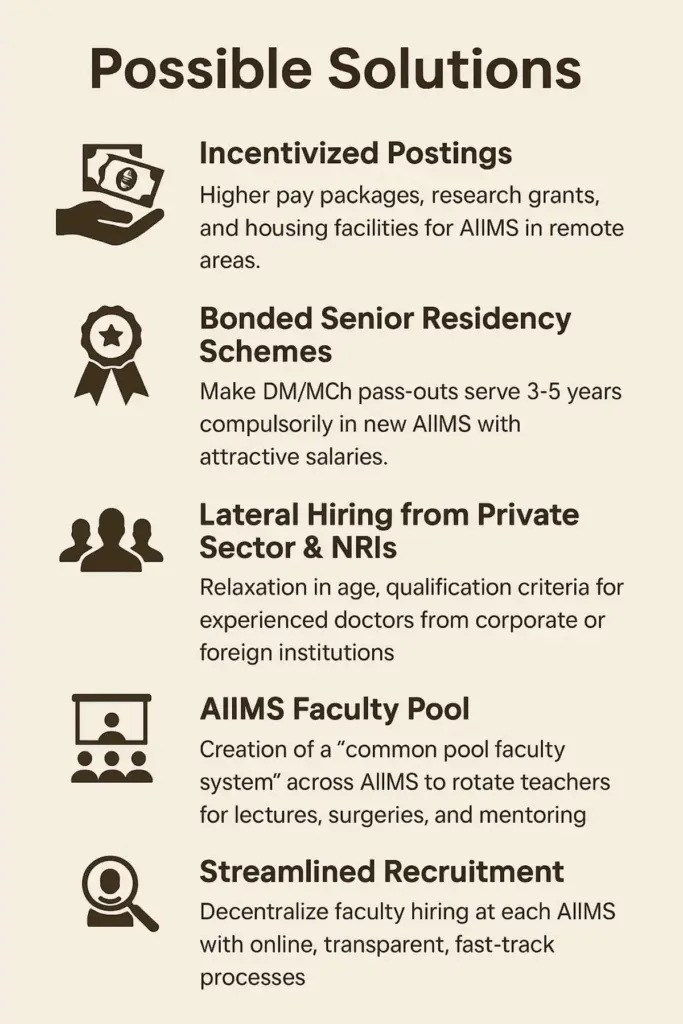
The faculty crisis at AIIMS represents a ticking clock for India’s healthcare ambitions. While policy-level responses are underway, systemic reforms and incentivised recruitment are needed to ensure that these world-class institutions do not falter under the weight of human resource deficiencies.
Solving this problem isn’t just about hiring; it’s about restoring the prestige, trust, and functionality of institutions that are central to India’s medical future.

